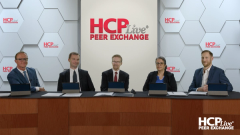
Investigational Approaches for Treating T1D
Schafer Boeder, MD, and Egils K. Bogdanovics, MD, share approaches to prevention, preservation, and replacement therapies for the treatment of T1D.
Episodes in this series

Steve Edelman, MD: Schafer, take us beyond stage 2. We got prevention, preservation once you already have T1D [type 1 diabetes], and replacement. I know Schafer was involved in islet cell encapsulated therapies, so talk a little bit about that. It’s the future, nothing approved at the current time, but I think it’s important to mention it.
Schafer Boeder, MD: It’s interesting. I’m not going to use the C word, cure, because I think everyone has a different sort of definition of what that might mean, and I’m not sure that these qualify, but when we look at these different sorts of categories of prevention, progression, and replacement, I think, interestingly, replacement is the farthest down the road, in a sense. It’s always that one that seems right around the corner, and yet it’s been difficult to give effective replacement. So there has been progress, and there are exciting studies and trials that are going on. A lot of them, as you alluded to, relate to giving islet cells back. That can be done via infusion. They can be, for example, infused into the portal circulation, where they sort of spread out and end up in the liver, and they have their action there. They can be encapsulated and then surgically implanted under the skin. So there are different approaches to those, and they’ve all shown different degrees of promise. In some cases, even effective beta cells have lived there and made insulin. What we haven’t seen is that consistently across many patients, where we’re getting people consistently off insulin or making meaningful changes to their insulin regimen and their glycemic control. The other side of that that’s an ongoing concern is the need for immunotherapy, immunosuppression therapy. It comes with its own issues and concerns and baggage. You’re exchanging one chronic disease for another, in a sense. You’re going to be on these immunosuppressive therapies. There are still big hurdles, but it remains an exciting space and one where progress continues to be made.
Steve Edelman, MD: To think 5 years ago, you would have had nothing to say. Look at all the different things that folks are working on. I know, Egils, you might have some comments on the cell replacement.
Egils K. Bogdanovics, MD: Well, starting with islets, the biggest problem is supply. Thousands of organ donors wouldn’t be enough to cover all our type 1s, and, of course, the need for immunosuppression. Pluripotent stem cells is the answer, and we’ve got a treatment now that potentially has no limit as far as availability of those cells. Did you guys see the human trial, the documentary?
Steve Edelman, MD: No.
Egils K. Bogdanovics, MD: It’s about 2 patients in early trials—spoiler alert, it didn’t work for them—but the epilogue, there’s a slide showing that in 2022, last year, a patient receiving stem cell therapy, on immunosuppressants though, [had] 99% time in range, no insulin. [Brian] Shelton, I think, his name was.
Steve Edelman, MD: He made the Wall Street Journal and The New York Times?
Egils K. Bogdanovics, MD: Wall Street Journal, New York Times, everything. It’s really interesting. The next step is to obviate the use or the need for immunosuppressants, whether by encapsulation or by changing the cell around.
Steve Edelman, MD: I think that’s well said.
Transcript edited for clarity.
Newsletter
Access practical, evidence-based guidance to support better care for our youngest patients. Join our email list for the latest clinical updates.






